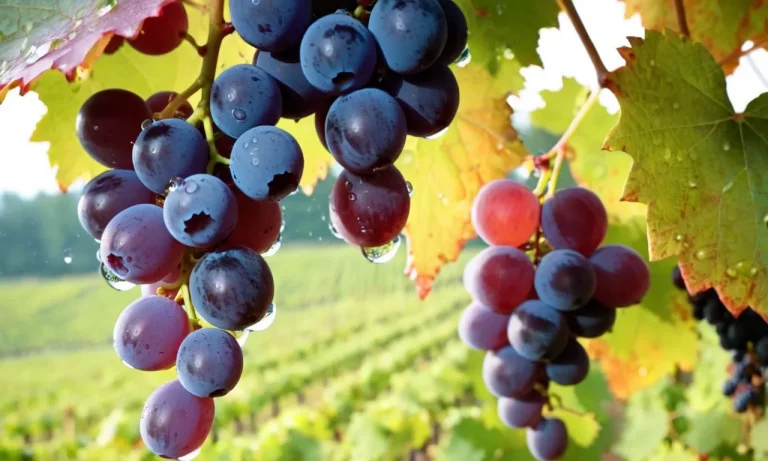The familiar story of Jesus turning water into wine at the wedding in Cana often elicits imaginations of the impressive miracle itself. Beyond the supernatural feat, however, lies profound spiritual significance interwoven into this account.
If you’re short on time, here’s a quick answer to what the water into wine story means: By miraculously turning ordinary water into premium wine, Jesus performed his first public miracle as a sign that the mundane aspects of human existence can be utterly transformed through divine grace into something extraordinary, foreshadowing the coming of God’s kingdom on earth.
In this comprehensive guide, we will unpack the multilayered spiritual meanings in this passage by examining the Old Testament backdrop, analyzing the rich symbology, and showing how this miracle heralded the dawn of Jesus’ public ministry in inaugurating the kingdom of God on earth.
Exploring the Immediate Narrative & Social Context
The Setting of the Wedding at Cana
The wedding at Cana was set in a small village in Galilee, likely among peasants and common people that Jesus had familiarity with (John 2:1-2). This modest social setting contrasts with extravagant royal weddings, showing Jesus cared about everyday people.
As a wedding celebration, it was a place of joy, community, and blessing – values at the heart of Jesus’ ministry.
Mary’s Intercession & Jesus’ Initial Refusal
Despite being asked to help when the wine ran out, Jesus initially refuses his mother’s request, saying “Woman, what does this have to do with me? My hour has not yet come.” (John 2:4). This indicates the deeper meaning behind the miracle was not initially clear even to Jesus.
However, being sensitive to Mary’s wish to bless the wedding couple, Jesus ultimately acts. This shows Jesus thoughtfully considers requests made in faith before providing divine aid.
Providing Choice Wine & Abundant Blessing
In changing water to wine, Jesus provided not just any wine, but extraordinarily high-quality wine – as the master of the banquet marvelled that the choice wine was served so late in the feast (John 2:9-10).
This first sign displayed Jesus’ glory in providing superabundant blessings that exceed needs or expectations. The enormous quantity of wine, amounting to 120-180 gallons, illustrates lavish divine provision beyond what one could reasonably hope for or imagine.
| Similarities | Differences |
|---|---|
|
|
For more analysis from top theology sites see: The Story of the Bible and Exploring the Meaning.
Echoes From the Old Testament
Allusions to Genesis & Creation
Jesus turning water into wine at the wedding feast in Cana contains rich allusions to the Genesis creation narrative. Just as God created the heavens and the earth from nothing, Jesus creates fine wine from ordinary water, demonstrating his divine power and creative authority.
The large stone water jars align with stone imagery in Genesis associated with the Garden of Eden and God’s creative acts (Genesis 2:12). Additionally, the description that the wine steward tasted was “good wine” (John 2:10) echoes God seeing that his creation in Genesis 1 was “good.”
This suggests Jesus is inaugurating a new creation with his miraculous sign.
Parallels to Moses & the Exodus
Turning water into wine also contains important messianic imagery linking Jesus to Moses and the exodus story. In the Old Testament, Moses performed signs and wonders with water before Pharaoh, including turning the Nile river into blood (Exodus 7:14-24).
Jesus transforming water into wine shows his superiority over Moses. Additionally, later in John 6, Jesus feeds a multitude in the wilderness with bread, mirroring Moses providing manna and quail for the Israelites wandering in the desert.
The large stone jars also parallel stone imagery from Exodus 17 where God commanded Moses to strike a rock to bring forth water. Just as Moses led Israel out of slavery into the Promised Land, Jesus came to lead people out of slavery to sin into God’s kingdom.
Contrast With Noah’s Drunkenness
Unlike Noah who became drunk from wine and lay exposed in his tent (Genesis 9:18-23), Jesus creates an abundance of fine wine to bring joy and celebration to a wedding feast. Rather than wine leading to drunkenness and shame, Jesus dignifies wine as part of a festive celebration by miraculously producing up to 150 gallons of wine from jars used for ceremonial washing.
This contrasts with Noah’s use of wine that violated social norms. It shows Jesus transforming something associated with sin and corruption in the Old Testament into something that instead brings joy and festivity.
The steward even remarks in wonder to the bridegroom that most serve the good wine first, then inferior wine when people’s senses and judgment become dulled (John 2:10). But Jesus dignifies wine by his transforming miraculous sign.
Rich Symbolism in the Miracle
Water as Jewish Rite of Purification
In Jewish tradition, water was used for ritual washing and purification (John 2:6). At Jewish weddings in biblical times, large stone water jars would be filled with water so wedding guests could ritually cleanse their hands before eating.
By transforming these vessels of Jewish purification, Jesus may have been showing how his coming would transform outdated Jewish ceremonial washings into something new. The old covenant was passing away and the new covenant was being established through Christ (Hebrews 8:13).
Wine Representing Joy in God’s Kingdom
The abundant wine flowing at the wedding feast is seen as a foretaste of the joy and celebration in God’s future messianic kingdom: “On this mountain the Lord Almighty will prepare a feast of rich food for all peoples, a banquet of aged wine – the best of meats and the finest of wines” (Isaiah 25:6).
This first sign showed Jesus’ glory and caused his disciples to put their faith in him (John 2:11). By providing the choicest wine at the very outset of his ministry, Jesus was giving a glimpse of the coming joy of his rule and reign.
Transformation Mirroring Spiritual Rebirth
On a deeper level, Jesus transforming water used for ritual cleansing into fine wine can be seen as him replacing the old religious system of external washings and purification rites with the new covenant in his blood, through which people would be spiritually cleansed and reborn.
This miracle parallels how Christ radically transforms those who put their faith in him – from dead in sin to alive in Christ and filled with new life (Ephesians 2:5). The Apostle Paul says, “Therefore, if anyone is in Christ, the new creation has come: The old has gone, the new is here!”
(2 Corinthians 5:17). Truly a complete inner renewal.
Inaugurating Jesus’ Public Ministry
The First Sign Pointing to Jesus’ Glory
Jesus’ first miracle of turning water into fine wine at the wedding feast in Cana was incredibly significant (John 2:1-11). This inaugural sign was a glimpse into Jesus’ true nature and glory as the Son of God.
The abundant and high quality wine He created pointed to His power over creation and defied ordinary human expectations. Just as the wine Refreshingly exceeded what the headwaiter anticipated, Jesus’ public ministry would be extraordinarily greater than people imagined.
Manifesting the Dawn of God’s Kingdom
The Miraculous wine also signified the arrival of God’s Kingdom through Jesus’ ministry. As He later declared, “The kingdom of God has come upon you” (Matthew 12:28). The Messianic wedding feast theme in Jewish thought symbolized the joy of God’s end-time Kingdom.
By His first sign at the Cana wedding, Jesus nodded to this motif and indicated that the long-awaited Kingdom was finally dawning.
Foreshadowing the Coming Hour of Jesus’ Death
Intriguingly, Jesus’ mother Mary prompted Him to perform this sign, saying “They have no wine.” But He initially objected that His “hour has not yet come” (John 2:3-4). This “hour” refers to His death on the cross. So why did Jesus then go ahead with the sign?
Perhaps even in this first miraculous unveiling of His glory, He foresaw that the cross still had to come before the full advent of God’s Kingdom.
The changing of water (representing ritual washing) into exquisite wine parallels how Jesus’ impending death would transform the old covenant of law and purification into the new covenant of grace and redemption.
The very vessels Jesus used were empty stone jars designated for Jewish rites, signifying the replacement of the old way with the new wine of the Gospel He came to inaugurate (Mark 2:22).
Conclusion
As the curtain-raising sign marking the launch of Jesus’ public ministry, the seemingly simple miracle of transforming water into wine contains profound depth of meaning. It points back to Old Testament themes of creation, exodus and messianic blessing while foreshadowing Jesus’ destiny to die on the cross as the sacrificial Lamb of God.
At the mystical level, turning plain water into premium wine signifies the utter transfiguration of mundane aspects of human existence through divine grace into something extraordinary. This sign ultimately heralds the inauguration of God’s long-awaited kingdom on earth in fulfillment of ancient prophecies.






